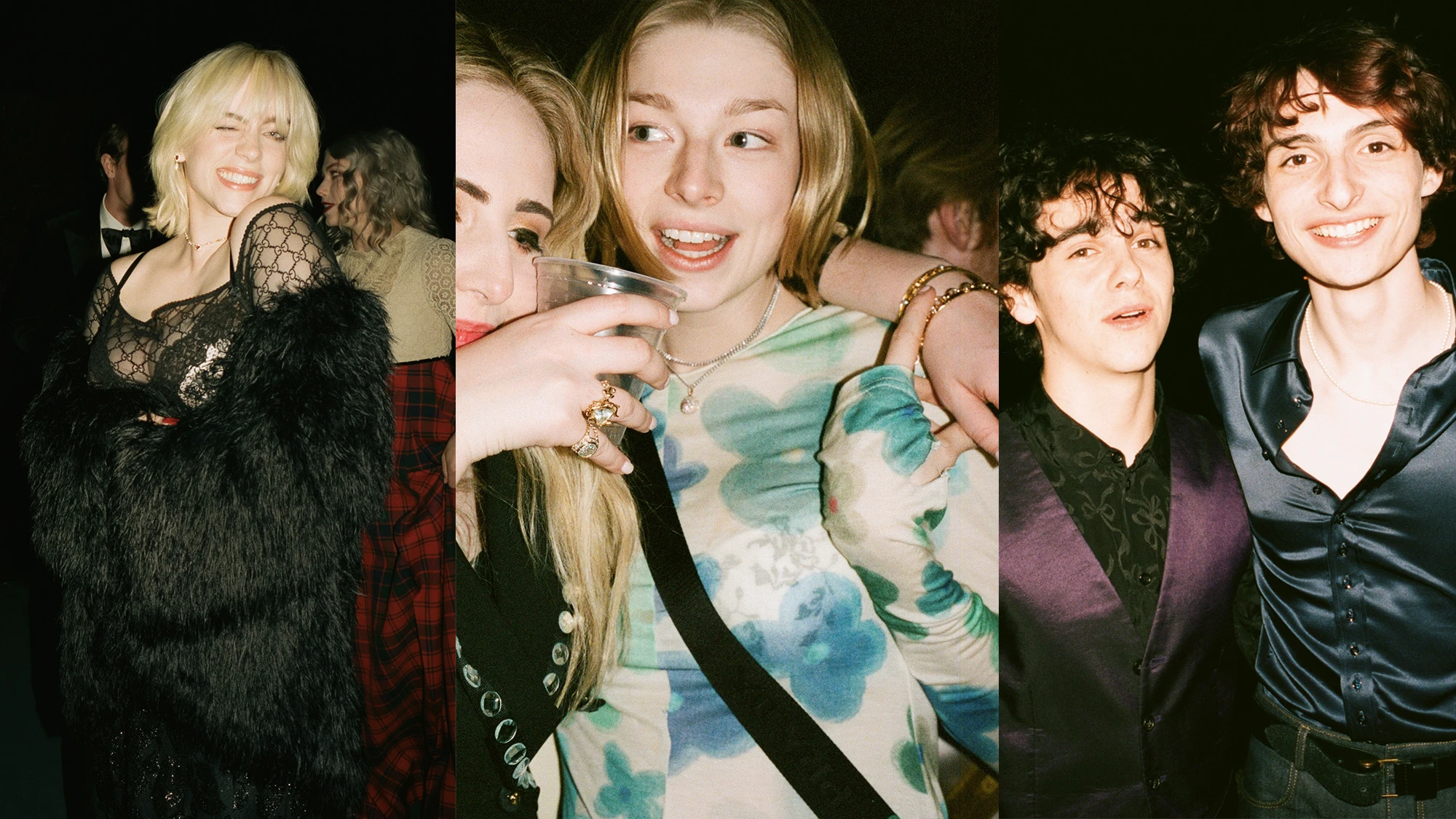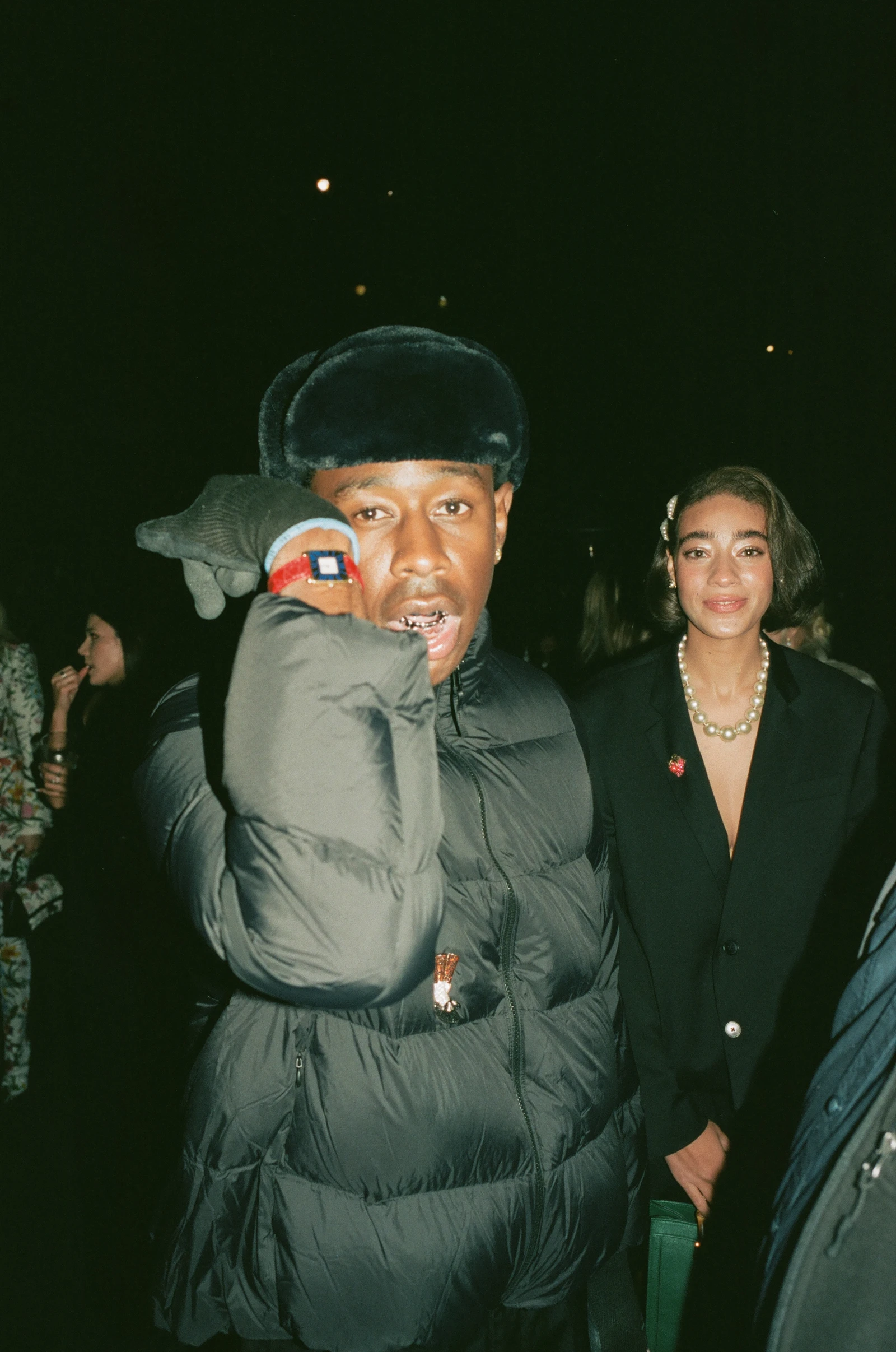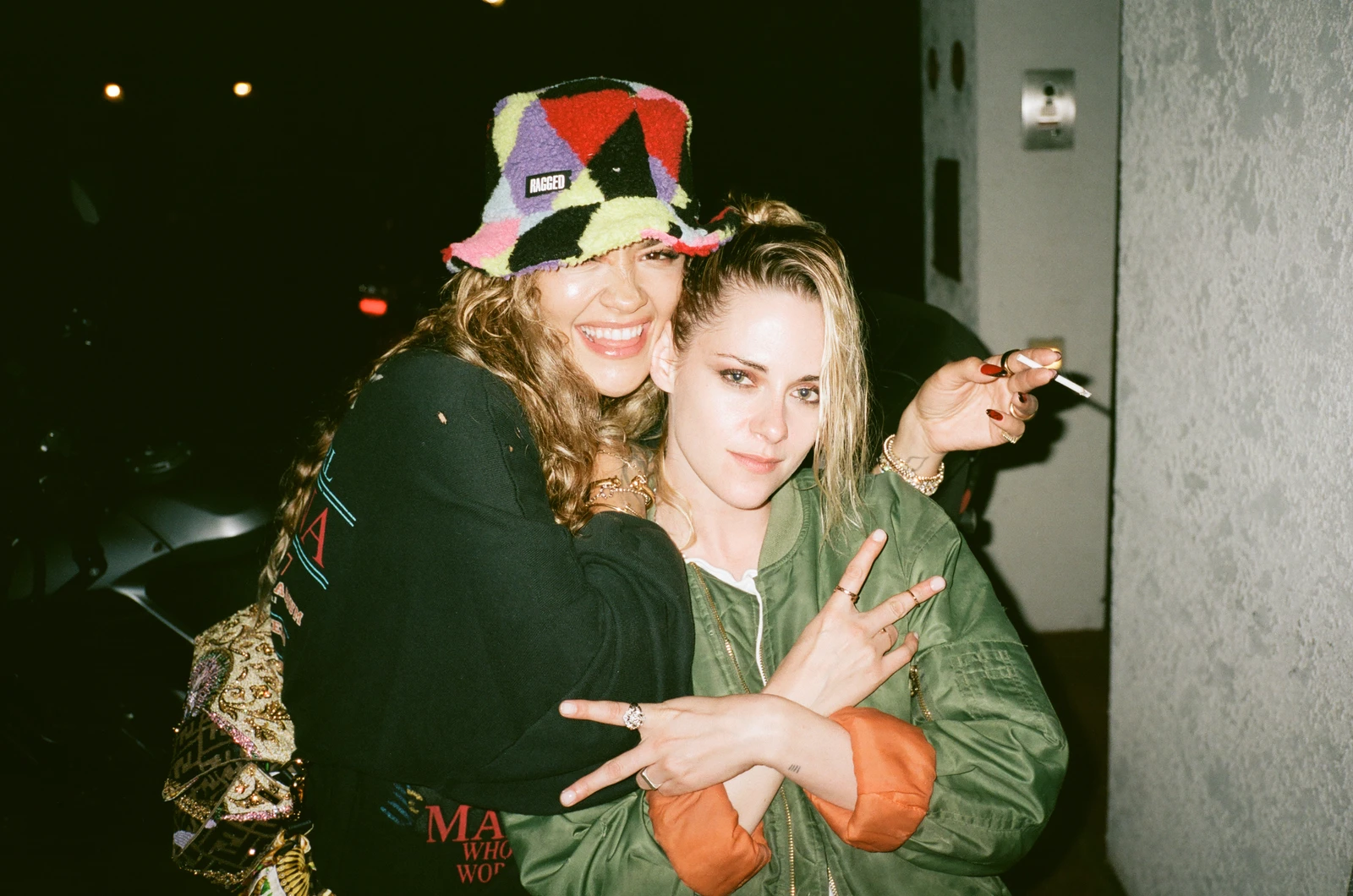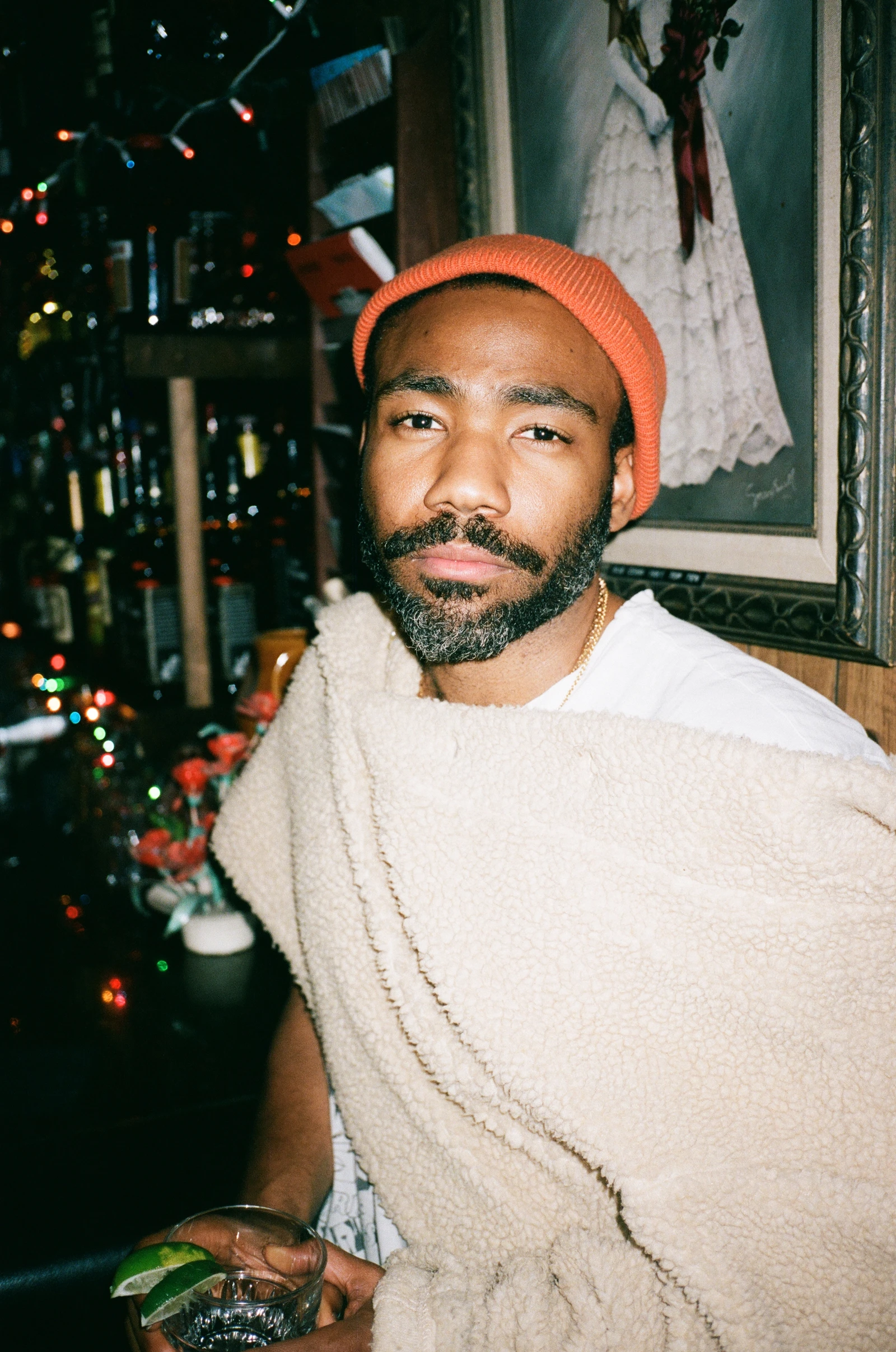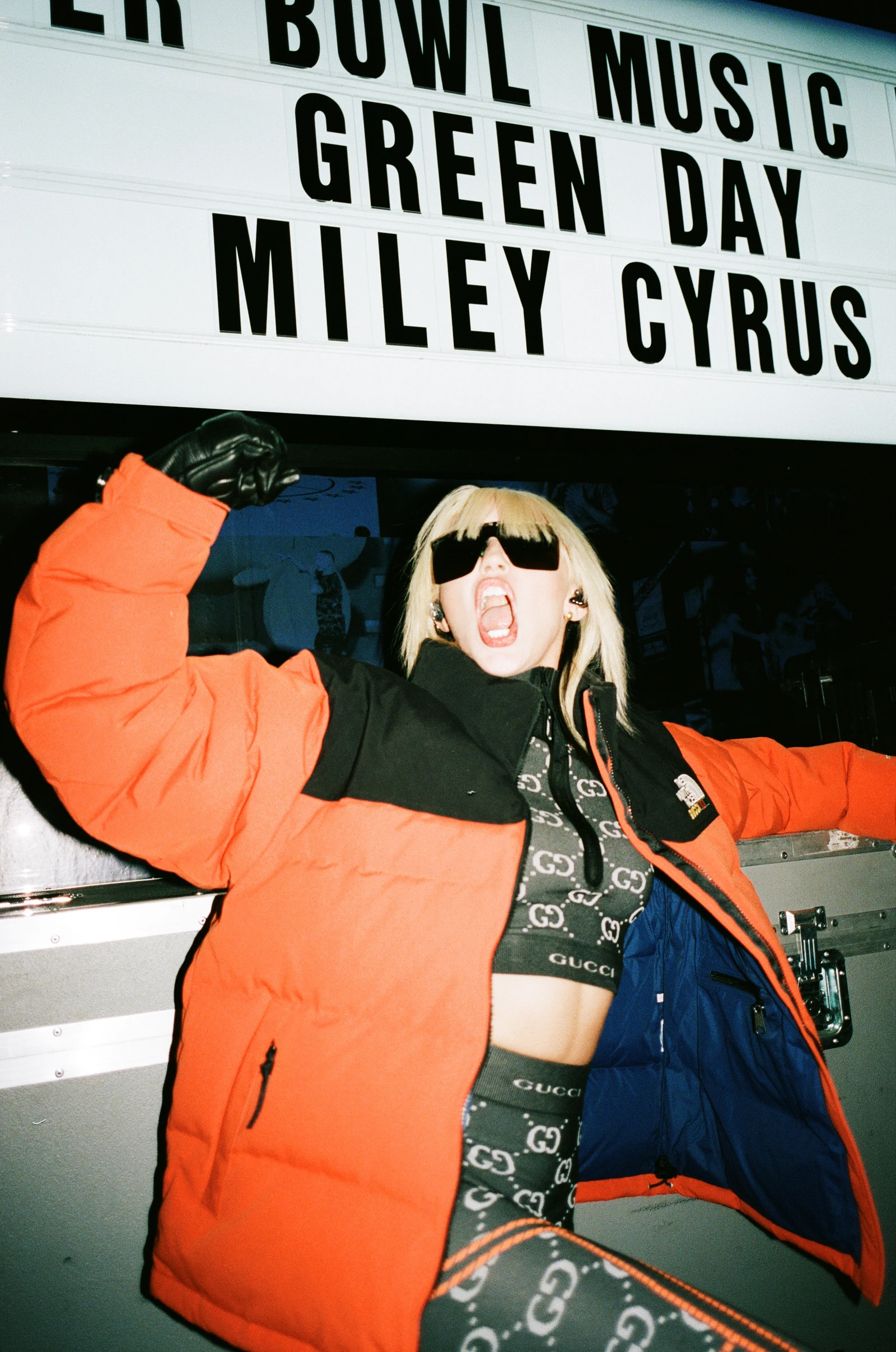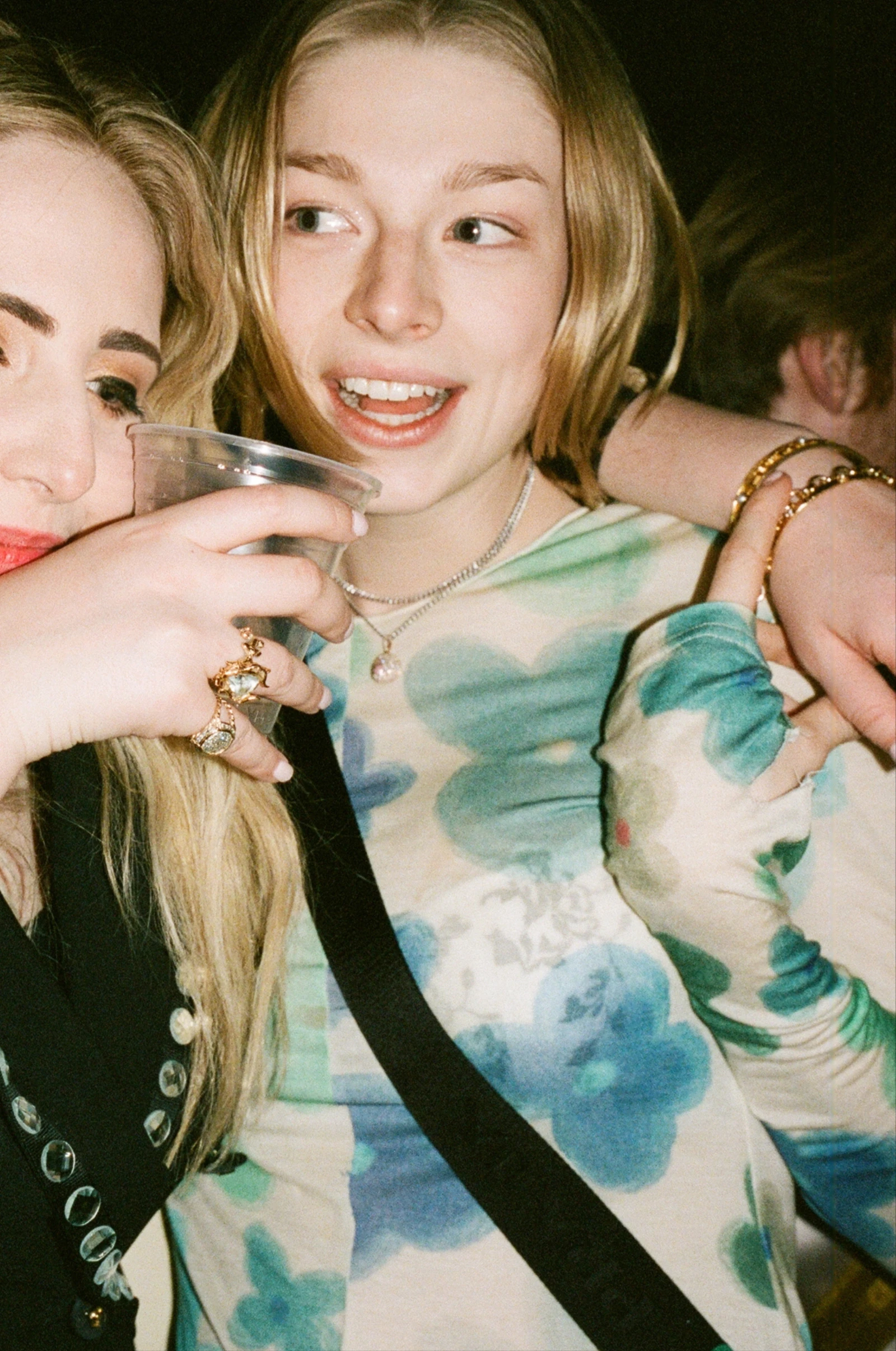The DJ-turned-photographer captures LA’s celebrity partygoers – including Zoë Kravitz, Kristen Stewart, and Chloe Cherry – in glorious 35mm.
There was an unexpected hitch on the way to the promised lands of the roaring 2020s. Vibes shifted, indie sleazed its way back, and social media entered its photo dump era by way of digital cameras and 35mm scans that seemed to represent a nostalgic longing for messy fun, uninhibited by smartphones or viral loads.
History will tell, but it helps to have photos. DJ, photographer, and man-about-Tinseltown Myles Hendrik came out of lockdown armed with his film camera in search of a community in the recovering nightlife scene. He started hosting disco parties for his A-list friends and found an inadvertent knack for capturing a rapturous post-pandemic Hollywood.
“Not being able to be social, to play music, to interact on all the human levels, really did a number on me,” Myles says. “I think in large part, all of that contributed to me stepping out of my comfort zone and leaning toward shooting people more often than I had before. I desperately missed the interaction, and the camera naturally led the way.”
The New Zealand native landed in Los Angeles nearly 20 years ago and has stacked a dizzying musical resume across music festivals, arenas, awards shows, runways, and underground clubs. One of those multihyphenates who defy category or scene—where celebs are usually friends and friends are mostly artists, musicians, and actors—Myles made a career out of partying hard and, fortunately for us, took his point-and-shoot along for the ride.
“It felt free, less contrived,” he says of his city’s jubilant return to the dancefloor last year. His allergy to the label “party photographer” is valid; more accurately, he’ll usually DJ or host the function (unless Gucci is paying). Music is his only guest of honour. And like playlists, photos are more a byproduct of the night’s mood than a careful curation.
“The vibe is simply to have fun, let go, no pretense,” he says of his monthly soirées, including a Studio 54-type bacchanal hosted in the Jewish-owned Chinese restaurant, Ghengis Cohen. “People put down their phones and just dance. The goal is to make everyone feel like they’re at ‘the best house party they’ve ever been to.’”
As a result, his elite IG feed reads like Zillennial society pages, where cool kid models are one swipe from blockbuster movie stars. He’s hacked the subtle art of the photo dump with indeterminate backdrops, lyrics as captions, and an aloof engagement that keeps the stans guessing. Hot and famous friends help, too.
“I’m fortunate in that people seemingly know I’m on their side when my camera is out,” Myles says. “Sometimes there’s already a relationship and that definitely helps to get the actual moments, the unconscious moments.”
It’s an off-the-cuff style that’s allowed Myles, behind shades and raven hair, to weave in and out of social circles as both friend and cameraman. Wielding an unobtrusive analog camera won’t interrupt dancing or kissing, and no one asks to see the photos after. His collected flashy portraits of icons like Miley Cyrus, Harry Styles, Zoë Kravitz, Robert Pattinson, Tessa Thompson (and many others) offer a peek behind the sanitized showbiz PR curtain. Like a cooler version of Stars—They're Just Like Us!
More than that, maybe, the impromptu snapshots register as inflection points in the zeitgeist and suggest a humanity to megastardom and LA itself. Still, he acknowledges the tacit contract he enters when photographing the world’s most recognisable names.
“There’s a true responsibility when you turn a camera on someone, they’re allowing you in,” Myles says of the delicate dance between photographer and high-profile subject. “My photos seem to resonate with people not simply because the person on the other side of the lens is somewhat known, but rather because there’s an honesty, a story in the image which only comes from some level of trust.”
Hollywood has never been about star power for Myles. His lens focused more on still shots, told by the city’s own cultural markers—palm trees, serpentine freeways, dingbat apartments—scenes bathed in sunlight the morning after. He exhibited these romantic visions of LA as hazy dreamscapes at Art Basel and a solo show at Maxfield Gallery. Photographing the Black Lives Matter protests and election rallies in 2020 changed that. He saw portraiture’s social value, that photography is as much a historical record as it is art, and a drunken starlet eating In-N-Out embodies the city just as much as the unlit neon sign for Circus Liquor does.
“The photos will remain a document of the time, a poetic timestamp, much in the same way as my stills of LA,” Myles says. “I simply shoot the world in front of me, the world I inhabit. And by nature, the images are artifacts of culture, place, fashion, movements, emotions,”
